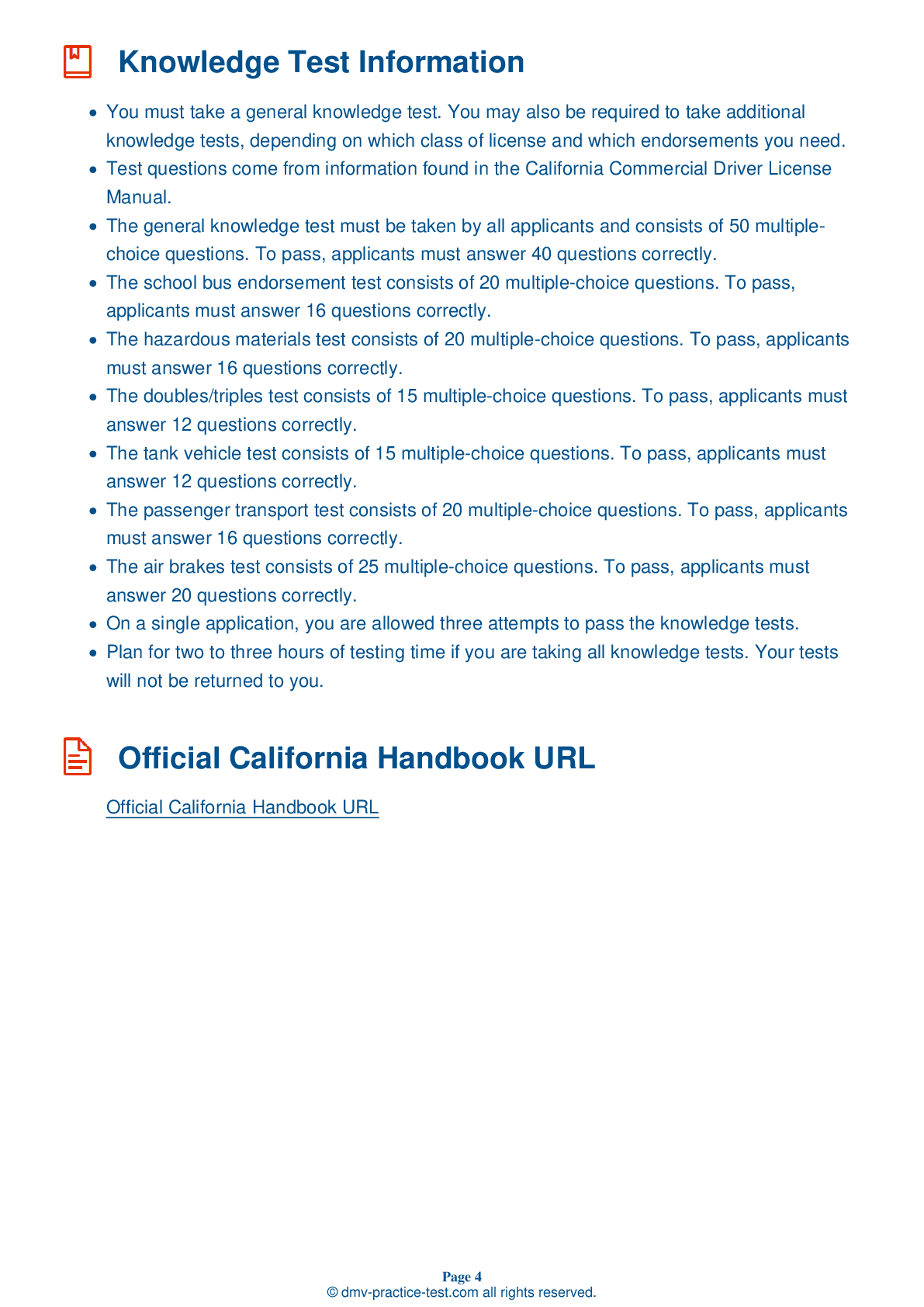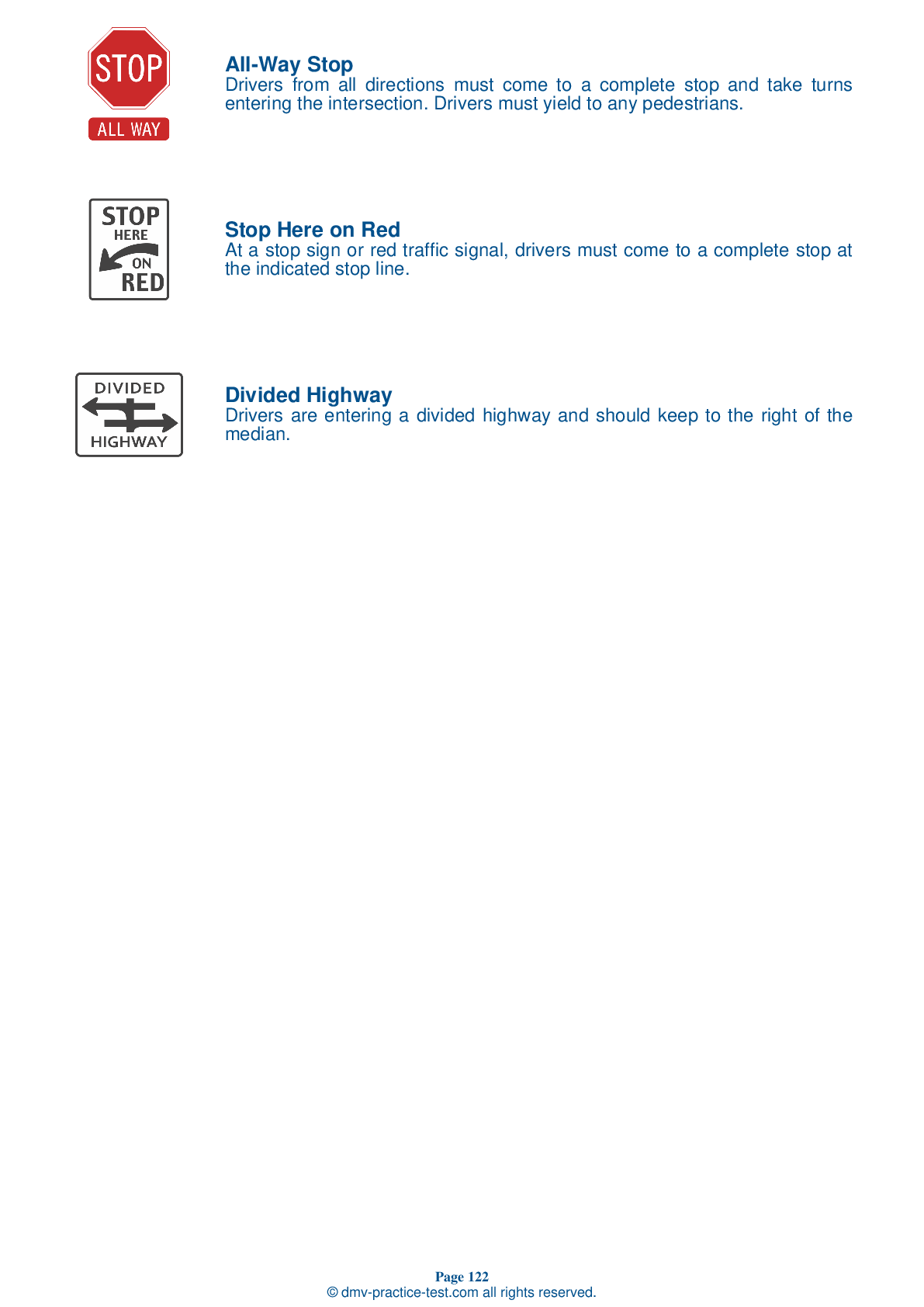Class A Driving Test | California 2025 #1 Page 3 of 7
Train for FREE online with our California class A license test. The official exam test consists of several obligatory parts, with all of them checking your knowledge of different blocks of road rules. If you need to obtain a CA CDL class A permit in 2025, practice as much as possible. Free sample tests published on our website will help you check and improve your knowledge and boost your grades. Please bear in mind that CDL class A requirements may vary from state to state.
15 . If exiting a bus, a driver must:
When exiting your vehicle during the basic vehicle control skills test, you must face the vehicle and maintain three points of contact at all times. If your testing vehicle is a bus, you must maintain contact with the handrail. Exiting the vehicle incorrectly may result in automatic failure of the basic vehicle control skills test.
16 . What are placards?
Placards, or signs, are placed on the outside of a vehicle carrying hazardous materials to identify the specific hazard class of the cargo being carried.
17 . Who is responsible for cargo that has been loaded onto a truck?
Even if they did not load or secure the cargo themselves, the driver of a vehicle is responsible for inspecting the cargo and ensuring that it is properly secured.
18 . Which of the following is not a sign of tire failure?
If you experience tire failure, you may hear the loud "bang" sound of a blowout or feel a heavy thumping or vibration in your vehicle. If steering begins to feel heavy, or if the rear of your vehicle begins to fishtail, you should stop to check your tires.
19 . Slow down and be extra careful:
Slow down and be especially careful when driving in and around work zones, in places where the pavement drops off sharply at the edge of the road, when foreign objects are present on the road, and on freeway on- and off-ramps.
20 . If an air compressor is belt-driven, the belt should be routinely checked to ensure that it is:
If your vehicle has air brakes, the air compressor drive belt should be checked before each drive. Check the tightness of the belt and verify that it is in good condition.
21 . How much distance will an air brake-equipped vehicle need to come to a complete stop if it is traveling at 55 mph under ideal driving conditions?
A vehicle's total stopping distance is made up of perception distance, reaction distance, brake lag distance, and braking distance. With all of these factors included, an air brake-equipped vehicle traveling at a speed of 55 mph under ideal driving conditions will need approximately 450 feet to come to a complete stop.
See the exact questions that will be on the 2025 California DMV exam.
99.2% of people who use the cheat sheet pass the FIRST TIME
Lillian MCcranie explains how our CDL study guide was helpful in passing the exam and recommends it to everyone.
Cameron tells us how he purchased the CDL exam, and found it to be a useful tool which helped him pass the exam and find a job.



